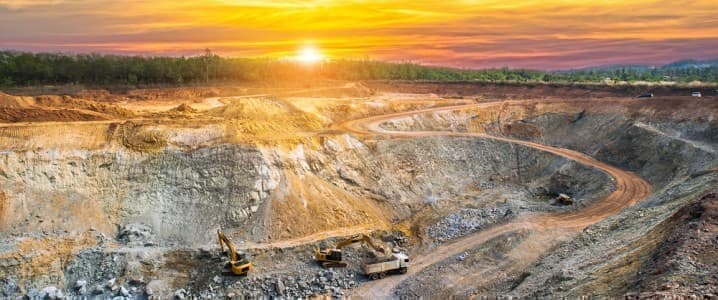Via AG Metal Miner
The global iron ore price may be in for a bit of a ride. Sector analysts foresee high price volatility in the first months of 2023, mainly due to the increasing number of coronavirus cases in China. Adding fuel to the fire is the fact that the government there has warned it will be “paying close attention” to the ore market changes.
The iron ore price index steadily increased from last November onward. Since the start of 2023, it increased by US $11 per ton to more than $122 per ton. Compare this to the $80 a ton cost at the end of October, it’s clear where the trend points.
Again, the primary factor in this movement is China. Late last year, the country decided to start reopening its economy, which many hoped would reboot its infrastructure growth. Now, all that could be sand in the wind.
Government Interference Already Affecting Iron Ore Price
Rising iron ore costs recently prompted the Chinese Government to make yet another effort to curb speculation. Just last weekend, China’s National Development and Reform Commission (NDRC), the country’s economic planning organization, declared that it would “pay close attention” to modifications in the iron ore market.
The agency said in a statement on Sunday that it would collaborate with the appropriate departments to “severely crack down” on illegal activities. They cited such examples as fabricating and disseminating information on iron ore price increases, hoarding, and price gouging. The goal, they said, is to “effectively ensure the smooth operation of the iron ore market.”
On Tuesday, news agency Bloomberg tweeted that China’s top economic planning body had summoned a group of iron ore traders. What’s more, they asked them to provide details of recent business.
The new developments were enough to send the iron ore futures market tumbling on Monday. Also, the most-traded iron ore on China’s Dalian Commodity Exchange ended the day 4.3% lower, at just $125 (832.5 yuan) a ton. The Singapore Exchange saw a similar drop, with benchmark February iron ore down 4.1% to $120.40 a ton.
Chinese economists are looking for increased infrastructure spending, increased activity across the board, and any property sector rebound. Any of these would swiftly translate into increased demand for iron ore by China’s steel mills. Clearly, this would explain the spike in the iron ore price. Instead, the rise has sparked yet another attempt by China’s authorities to dampen speculative activity.
Rio Tinto Predicts Even More Volatility Ahead
Last year, China established a new organization, China Mineral Resources Group (CMRG). Its job was to negotiate iron ore purchases on behalf of about 20 of China’s largest steelmakers. Clearly, this showed a desire by the government to control both the iron ore price and supply. This was hardly surprising, given the country’s innate distrust of the open markets.
Observers opined at that time that China also wanted to counter the market hold of the three big producers of seaborne iron ore: Rio Tinto, BHP, and Brazil’s Vale. By concentrating the buying power of the major mills, China hopes to extract discounts on market prices from the big producers.
In response, Rio Tinto predicted turmoil in iron ore supply and prices in the coming months. On Tuesday, the mining giant reported it had shipped 87.3 million tons of ore from its mines in Western Australia’s Pilbara during the December quarter. This was about 4% more than the same time last year.
The company said that market conditions had improved towards the end of last year, sending the iron ore price 22% higher. Still, Rio Tinto warned that there would be “high volatility” in the coming months due to the wave of coronavirus cases in China.
“Steel demand recovery centers around China’s ability to control the COVID outbreak,” Rio Tinto said. Iron ore typically ranks as Australia’s most valuable export. In 2021, it raked in record earnings of more than $150 billion.
By Sohrab Darabshaw
More Top Reads From Oilprice.com:
- Russia’s Economy Is Beginning To Feel The Weight Of Sanctions
- Canada Sees “Unprecedented” Number Of People Claiming EV Rebates
- Scientists Make Major Breakthrough In Sustainable Hydrogen Production


















